The type of handwriting used by German soldiers and civilians during WWII was different from modern American handwriting. To shed some light on how people wrote in that place and time, I will provide some historical background, and then show some typical examples.
German-speaking countries had a unique script style that evolved alongside the better-known “Fraktur” or “blackletter” Gothic typefaces. This German script originated in Germany in the sixteenth century. It was originally written with quill pens made from bird feathers, these generally had a broad nib. Later, around the end of the eighteenth century, this German script began to change as a result of influence from the English writing style, which used a pointy nib. Steel nibs for dip pens began to be made in factories in England in 1836, and in Germany in 1856. By this time, the German script had become what is known as Kurrent.
Kurrent was a script that normally was written with flexible pointed steel nibs, which created a line variation that gives this style its characteristic appearance. The letters were normally written at an angle of 60 to 70 degrees. Kurrent has very exaggerated ascenders and descenders- these are both twice the height of a normal lower case letter. What I mean by that, is that (for example) the “tail” of a lower case “p” would be twice as long, as the lower case letter “o” is high. A capital “H” was five times as high as an “o.”
Around 1900, new types of steel pen nibs were being introduced in Germany. The new nibs allowed for writing with a uniform line thickness, eliminating the variation typical in Kurrent. People who designed handwriting styles (there apparently were such people back then) began to create new scripts to use these new nibs. Ludwig Sütterlin was the man who designed the script that eventually would bear his name. This style was written with nibs such as the “Redis” that ofered uniform line thickness, and instead of the exaggerated ascenders and descenders of Kurrent, his writing had a 1:1:1 ratio. An ascender or descender was the same height as a lower case letter. Another major change was the writing angle- in Sütterlin, the letters are not slanted, but vertical.
Sütterlin handwriting was introduced in Prussian schools on a trial basis in 1914 and was being used in all schools in Prussia by 1924. By 1930, it was being taught in most German speaking areas. But there still was no uniform standard, and different schools were teaching different styles. It was not until September 1934 that a new law was enacted, effective with the 1935/36 school year, making Sütterlin the official script taught to all German schoolchildren.
I want to note at this point that people in these years must still have been learning what we would call standard, Latin type cursive, known as “Normalschrift” in Germany at that time. Many people who normally wrote in Sütterlin would use “Normalschrift” (regular Latin cursive) for place names, names of people, titles, and foreign words. Why the Germans taught two different styles of cursive handwriting is unknown to me. Also unknown to me is why some Germans, who likely were in school during the time that Sütterlin was uniformly taught to all students by law, appear to have chosen to write in Normalschrift instead. Was it just a matter of personal choice?
In January 1941, the Nazi regime enacted a new law stipulating that Sütterlin would no longer be taught in schools. Just why this change was made is not clear. Of course, for millions of people, this was their everyday handwriting. No attempt was made to prohibit or ban the use of this handwriting. People who wrote this way continued to do so.
After the war, lots of people still wrote this way in German-speaking areas. Sütterlin was taught in some German schools into the 1970s as a secondary handwriting. As of this writing (December 2017) it is possible that there could still be a few people out there who learned this as a primary style and who still use this for daily writing. I feel some sadness when I contemplate how this beautiful writing now passes into history.
The Normalschrift of 1941 was later renamed “Lateinische Ausgangsschrift” and saw some minor changes. This type of cursive is taught in German schools today. For now…
Let’s look at how these scripts were supposed to look. First, Kurrent from around 1900.
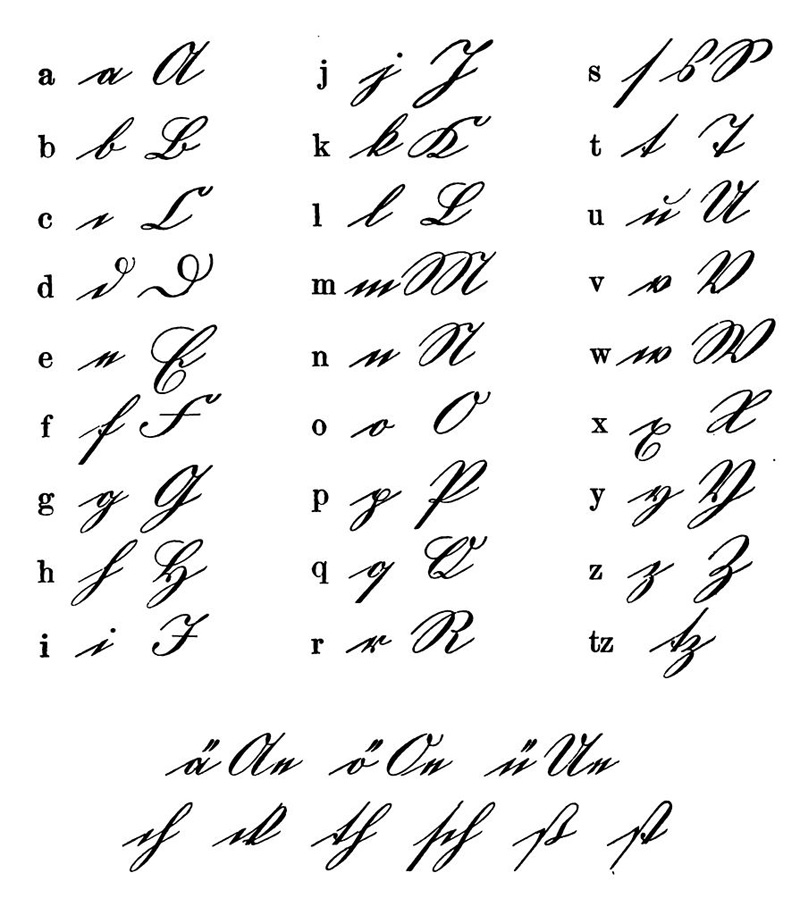
This image below is from a German textbook published in 1903.
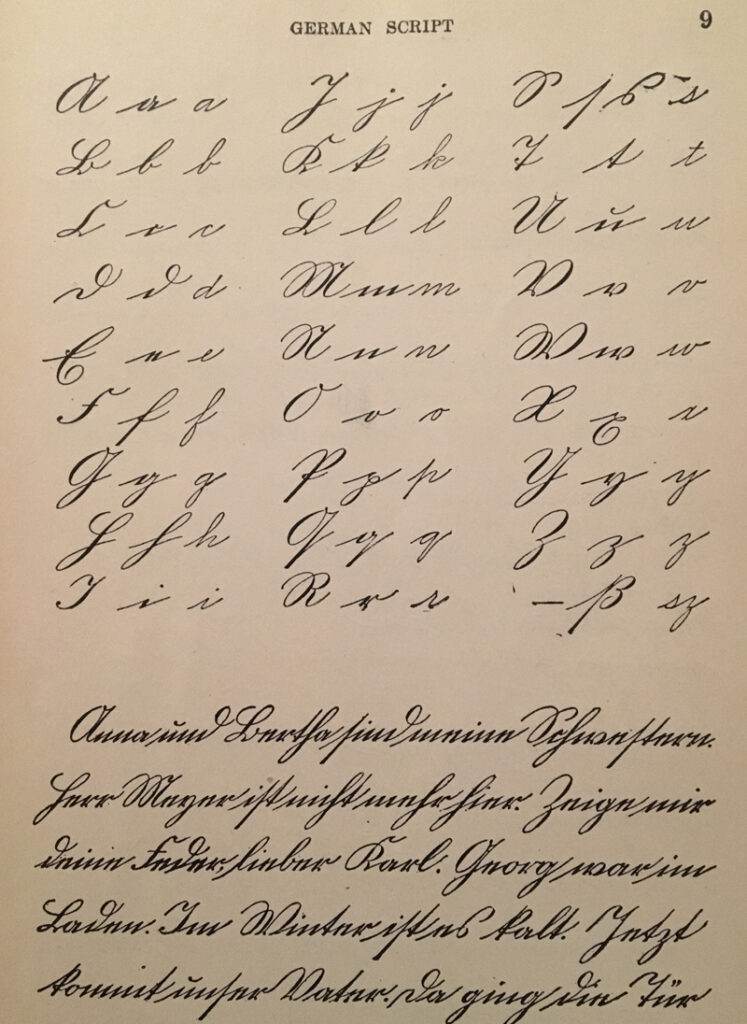
Below: Sütterlin, taught in all schools 1934-41.
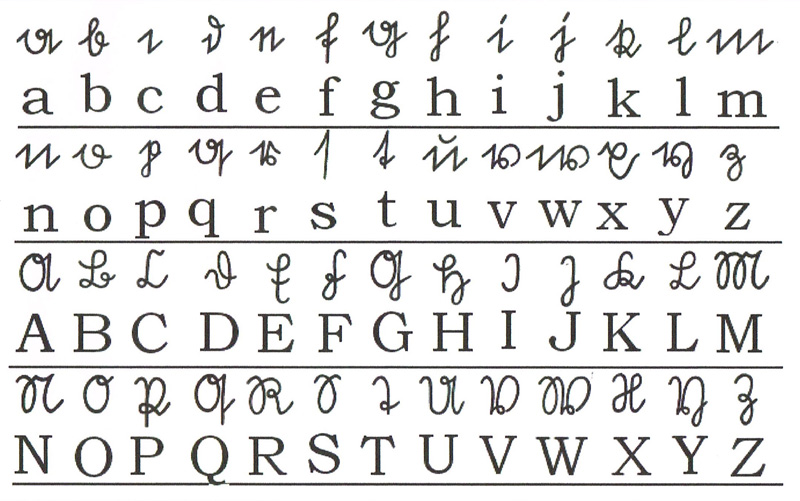
Below: Normalschrift of 1941.
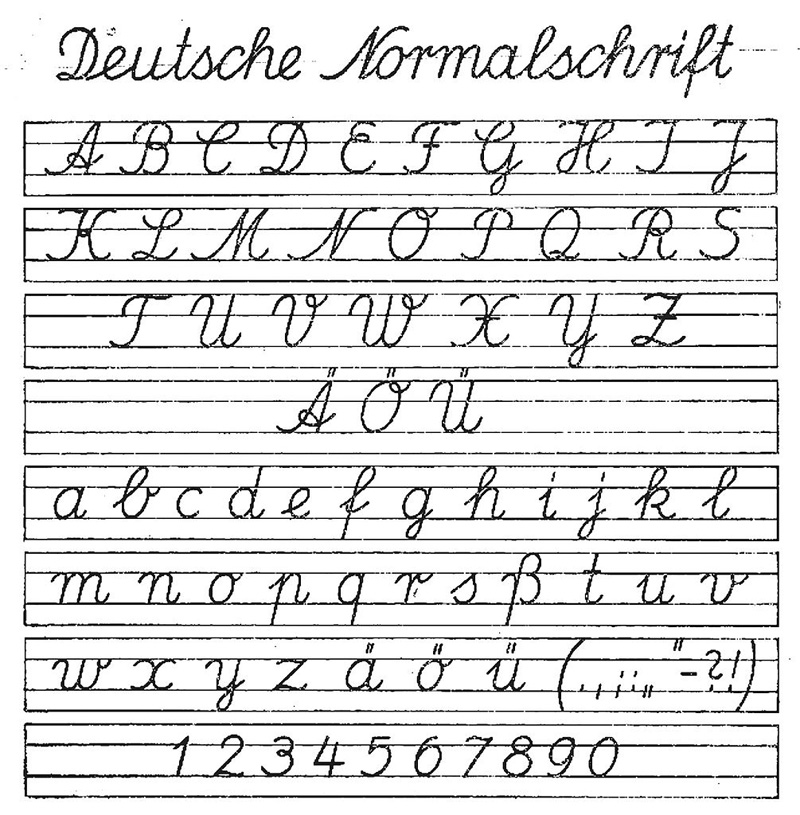
Handwriting is an individual and personal thing. Very few people write exactly the way a script is written in a book. The majority of people add their own style and their handwriting reflects a unique personality. I took some photos of some samples of old German handwriting to illustrate this.
Let’s start with some Kurrent. Here is a postcard sent by a soldier in the East in 1941. This script style was supposed to have been written with a pointy nib. This soldier used what was available- a pencil.
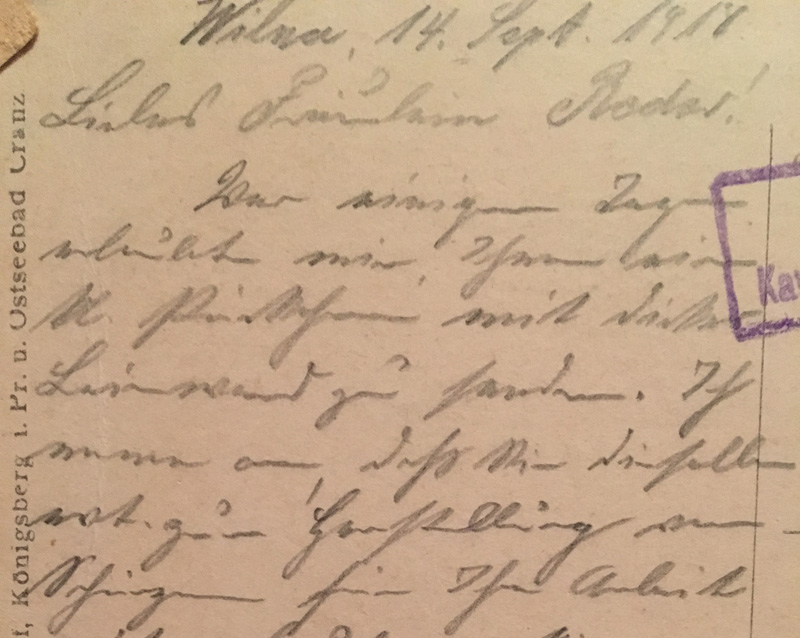
Use of this style did not cease when Sütterlin was introduced. Pointed nibs were still sold. This letter from 1934 is addressed to “Herrn Friedrich Wümling, Gärtner.” The long ascenders and descenders are noticable.

This address from around the same era is a sort of a hybrid. The size relationships of the letters are from Kurrent, the vertical writing angle is a Sütterlin trait.
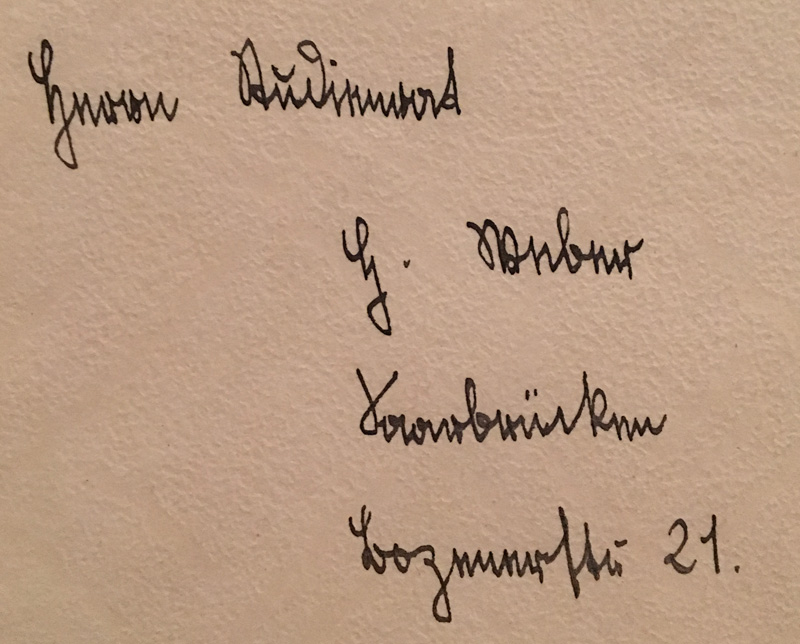
Here are some Sütterlin examples. As you can see, there were limitless variations of how peoplem adapted this writing to express themselves. These are wartime letters, the latest is dated from spring of 1945.
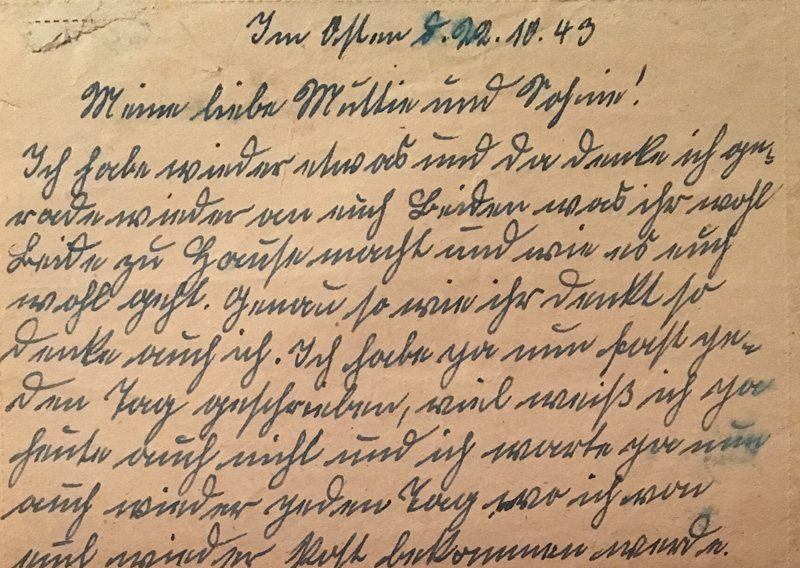
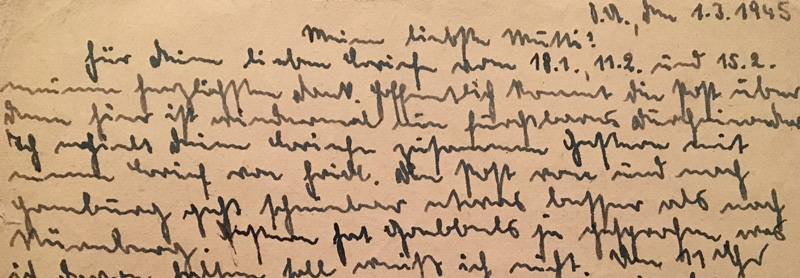
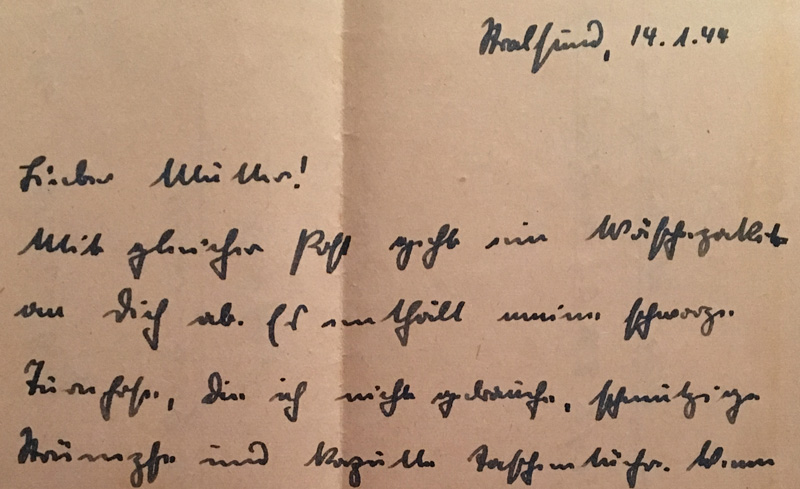
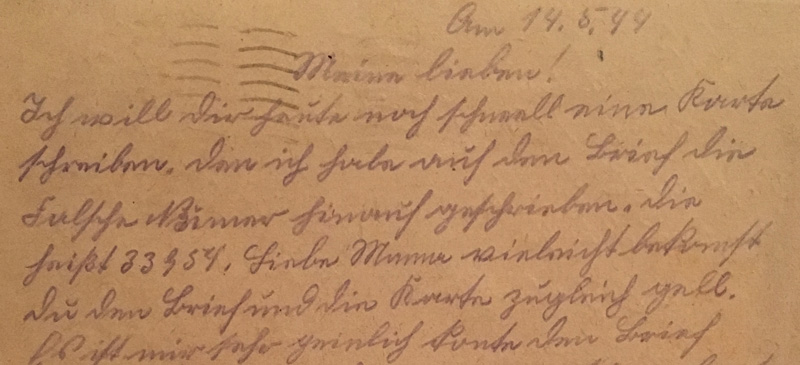
An early use of Normalschrift- an inscription from 1928.
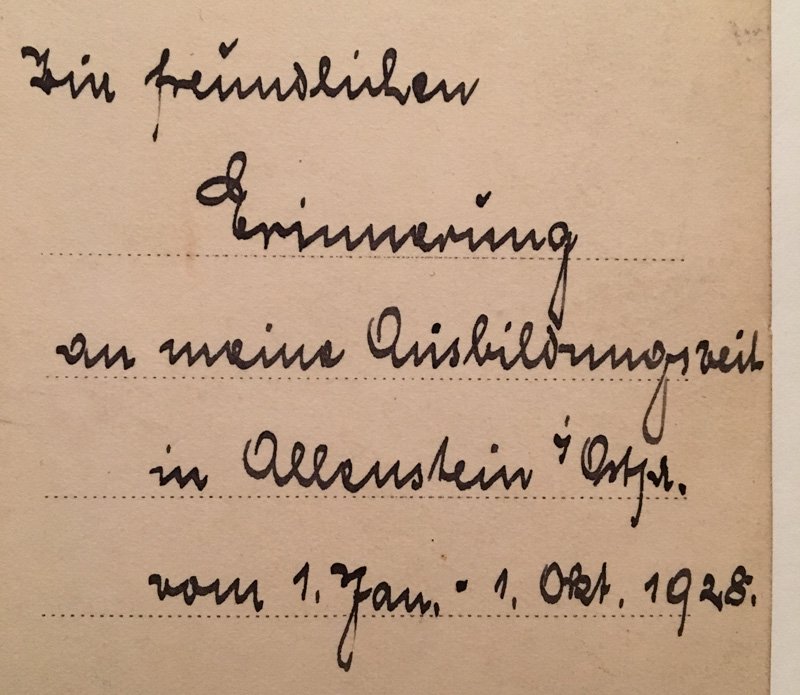
Some examples from during WWII.


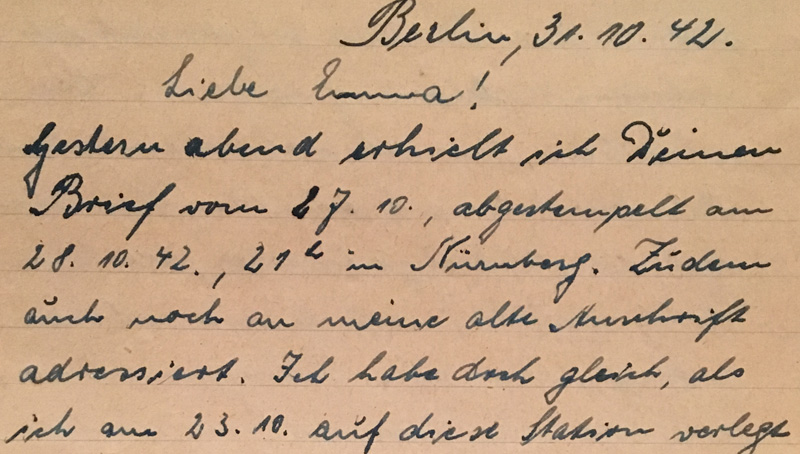
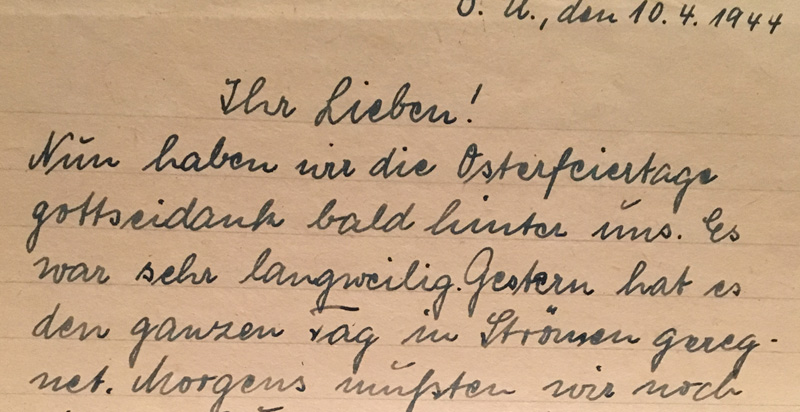
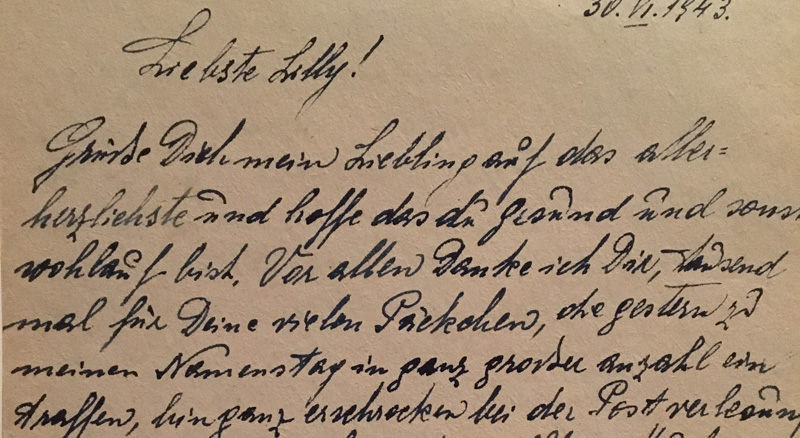
As mentioned above, when writing German script, many writers would switch to Latin cursive for names, and place names. This marriage certificate is written in Kurrent but the groom’s name and the town name are in Normalschrift. The bride’s name appears to be Kurrent. What a challenge it must have been, to switch back and forth.
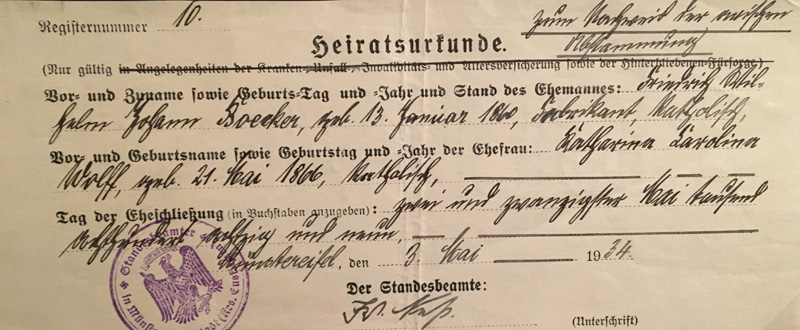
This official document has the first name in Kurrent, the last name in Normalschrift. I don’t know if this was intentional, or not.
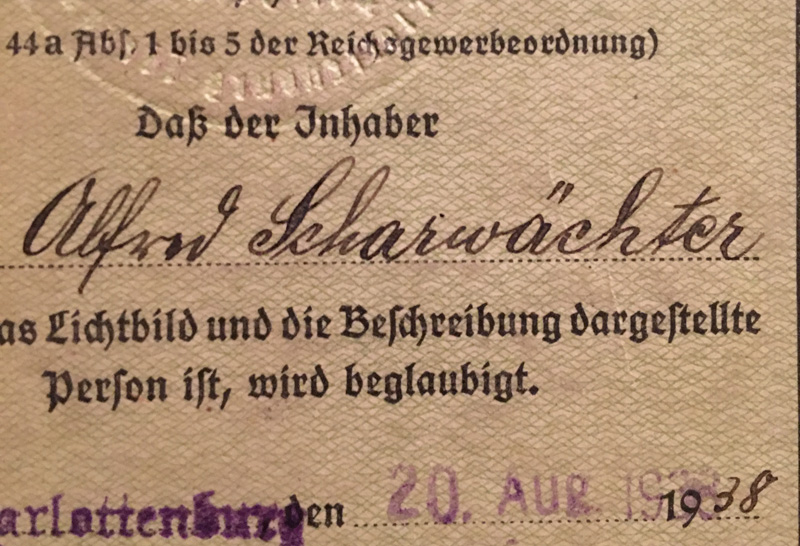
Some people, particularly those with limited schooling, would use a mix of German script, and Latin cursive, mixing the letters seemingly at random. Latin upper case with German lower case writing was a style some people seem to have deliberately adopted.
Anyone, today, can learn to write in German script. It simply takes practice. The best resource I have found is a book called “Deutsche Schreibchrift: Lesen und Schreiben lernen” by Harald Süss. There are a few versions of this book. The “ÜB” (Übungsbuch) version is just a work book with pages for you to practice. The “Lehrbuch” version is full of script examples and information about how to write in this beautiful script. It’s in German, but even if you can’t understand the text, if you want to learn to write this way, it is worth the cost just for the illustrations.